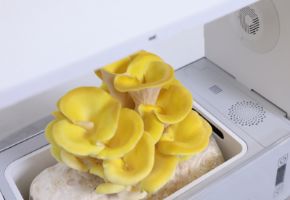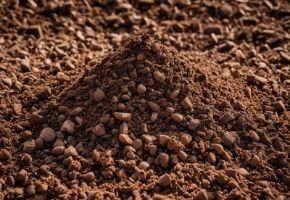Poisonous mushrooms pose a serious threat to public health, especially during the harvesting season. Every year, numerous cases of poisoning are reported, some unfortunately fatal, due to the consumption of toxic mushrooms collected by inexperienced foragers. Knowledge of the main characteristics and precautions to take is essential to avoid serious consequences.
General morphological characteristics
The cap
The cap of poisonous mushrooms can have various characteristics:
- Coloration: often bright or with characteristic spots
- Surface: can be smooth, scaly, slimy, or dry
- Shape: varies from convex to flat, sometimes with a central umbo
The stem
The stem is an important diagnostic element:
- Presence of a ring: many poisonous mushrooms have a noticeable ring
- Volva: the presence of a volva at the base of the stem is a sign of potential danger, a typical characteristic of the Amanita genus
- Consistency: can be fibrous, fleshy, or cartilaginous
The gills
The gills are a crucial element for identification:
- Color: pay particular attention to the color of young and mature gills
- Arrangement: can be free, adnate, or decurrent
- Density: the density of the gills can vary significantly
Some notable poisonous mushrooms
Amanita Phalloides
The Amanita phalloides is considered the most dangerous mushroom of all!
- Appearance: olive-green cap with white gills
- Habitat: Broadleaf forests, particularly under oaks
- Toxicity: Contains amatoxins, particularly lethal toxins
- Symptoms: First effects 6-12 hours after ingestion, severe liver damage
Amanita Muscaria
Easily recognizable but equally dangerous
- Appearance: red cap with white spots
- Habitat: conifer and birch forests
- Toxicity: contains muscarine and ibotenic acid
- Symptoms: neurological effects, hallucinations, gastrointestinal disturbances
Of course, these are not the only poisonous mushrooms, as this world is composed of many species. They are the ones most often mentioned, and they often deceive because their images are frequently depicted in various illustrated books, including those for children!
Habitat and distribution
Poisonous mushrooms are found in various environments:
- Broadleaf and conifer forests
- Meadows and pastures
- Wet areas and undergrowth
- They often grow in the same habitats as edible mushrooms, making identification even more crucial
Toxic effects and symptoms
Short latency syndromes
Symptoms that appear within 6 hours of ingestion:
- gastrointestinal disturbances
- sweating
- blood pressure changes
- respiratory problems.
Long latency syndromes
Particularly dangerous as symptoms appear when toxins have already caused significant damage:
- liver damage
- kidney failure
- neurological problems
- possible fatal outcome
But ingesting mushrooms of uncertain origin without having them checked, bearing in mind that an edible mushroom placed next to a toxic mushroom should be discarded because it is likely contaminated as well.
Precautions and safety
Fundamental rules
- never collect mushrooms without specific preparation
- always have collected mushrooms checked by an expert mycologist
- do not trust empirical methods or popular beliefs
- collect only intact and well-developed specimens.
In case of poisoning
Immediate actions to take:
- go immediately to the emergency room
- preserve any remnants of consumed mushrooms to present to the doctor
- do not attempt DIY treatments
- note the time elapsed since ingestion
We also remind you that the Poison Control Center service is always active. The Center responds to calls at the toll-free number 800 011 858, 7 days a week, 24 hours a day, and the doctors working there are also available to visit hospitalized patients even off-site for targeted consultations.
Watchword: don't take risks!
Mushroom picking is an activity that requires knowledge, experience, and caution. The risk of confusing edible species with poisonous ones is always present, so it is essential to follow some basic rules:
- collect only species that you know with absolute certainty
- in case of doubt, absolutely avoid consumption
- always rely on the judgment of expert mycologists
- participate in specific training courses before starting to collect
- and not least, buy already verified mushrooms at the supermarket or from a trusted greengrocer or cultivate certain species in inoculated substrates from controlled supply chains.
Prudence is never too much when it comes to mushrooms: better to skip a meal than risk your life.
The fungal kingdom is a universe in continuous evolution, with new scientific discoveries emerging every year about their extraordinary benefits for gut health and overall well-being. From now on, when you see a mushroom, you will no longer think only of its taste or appearance, but of all the therapeutic potential it holds in its fibers and bioactive compounds. ✉️ Stay connected - Subscribe to our newsletter to receive the latest studies on: Nature offers us extraordinary tools to take care of our health. Fungi, with their unique balance between nutrition and medicine, represent a fascinating frontier we are only beginning to explore. Continue to follow us to discover how these extraordinary organisms can transform your approach to well-being.Continue your journey into the world of fungi









